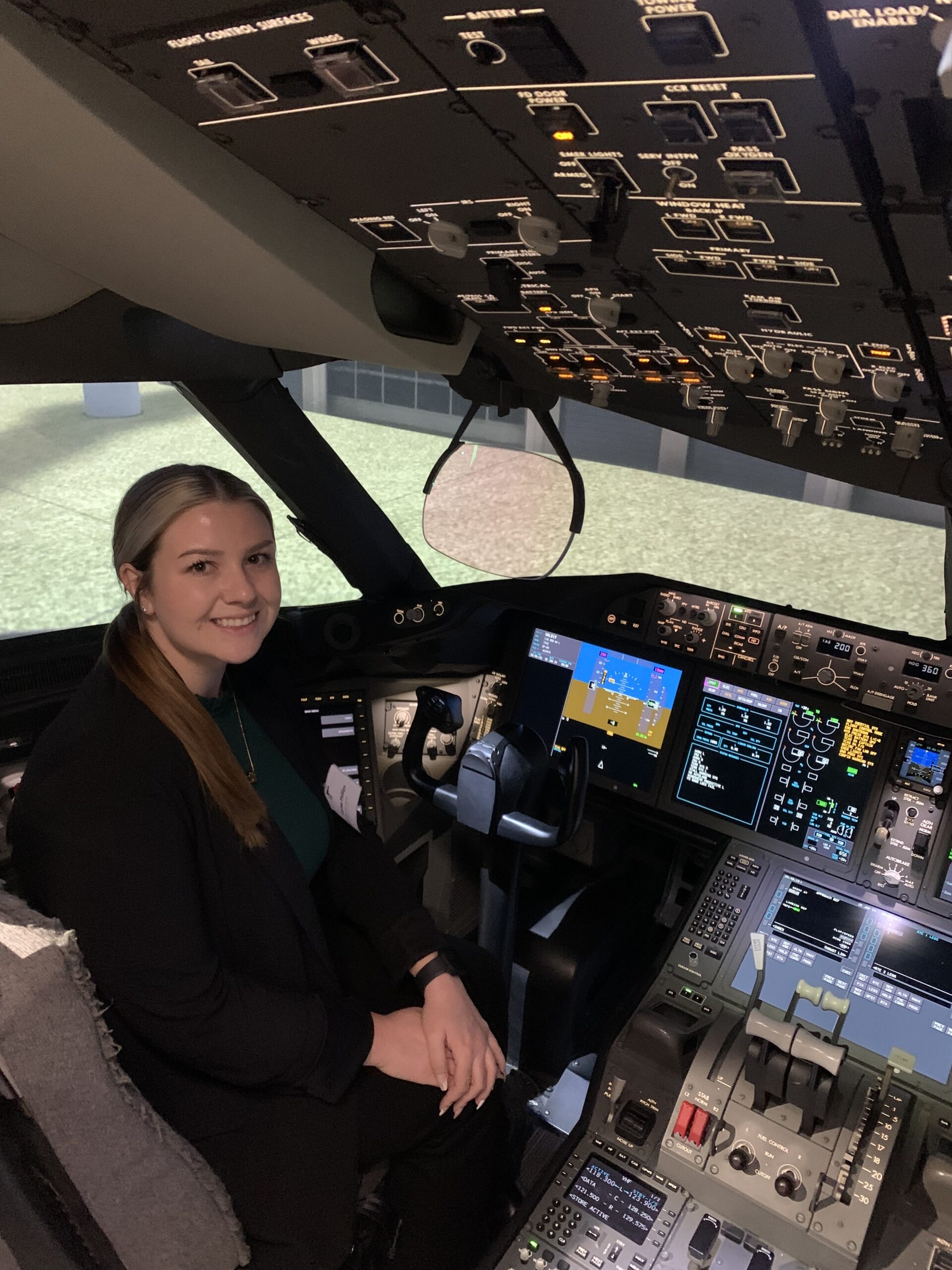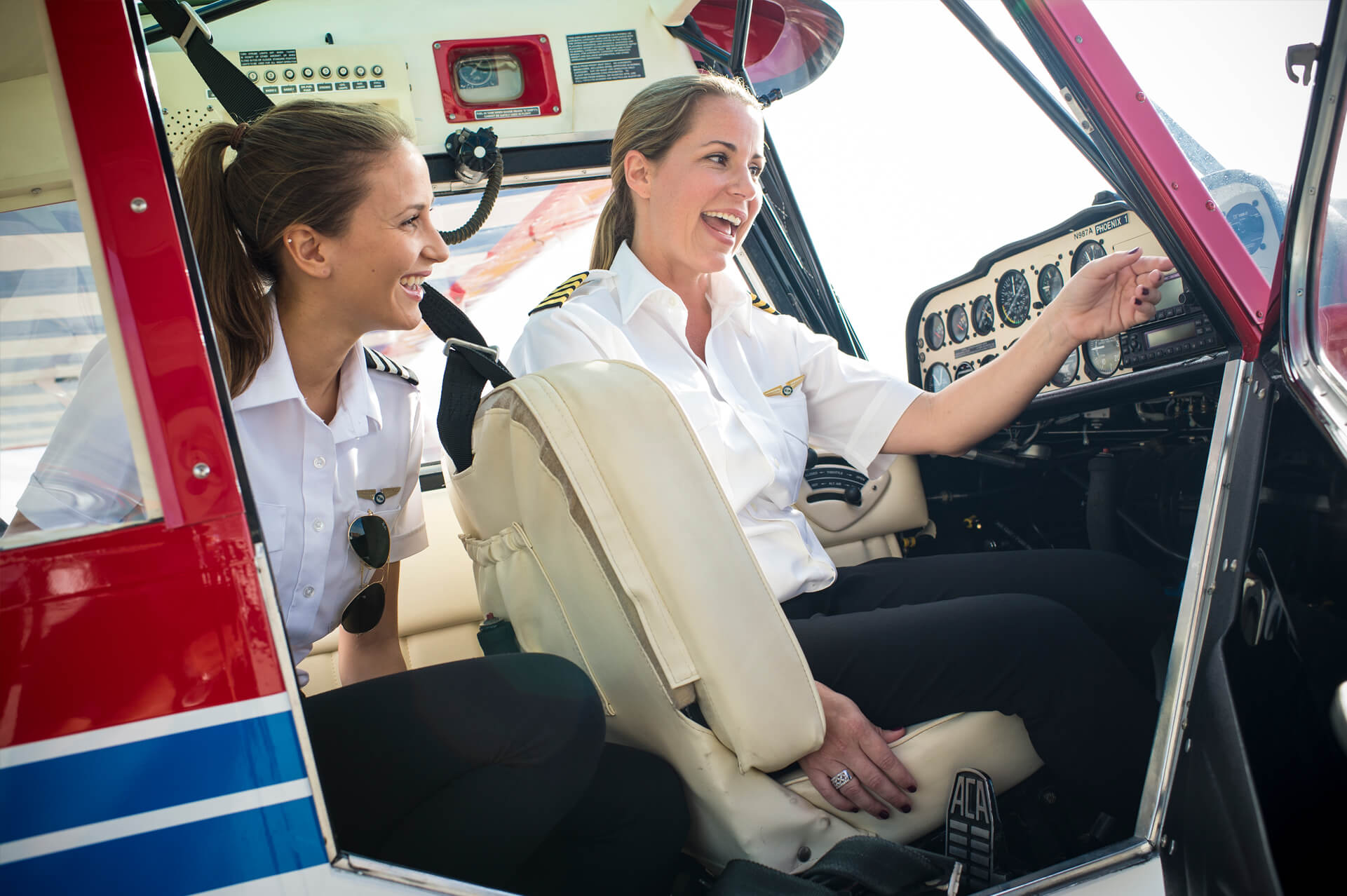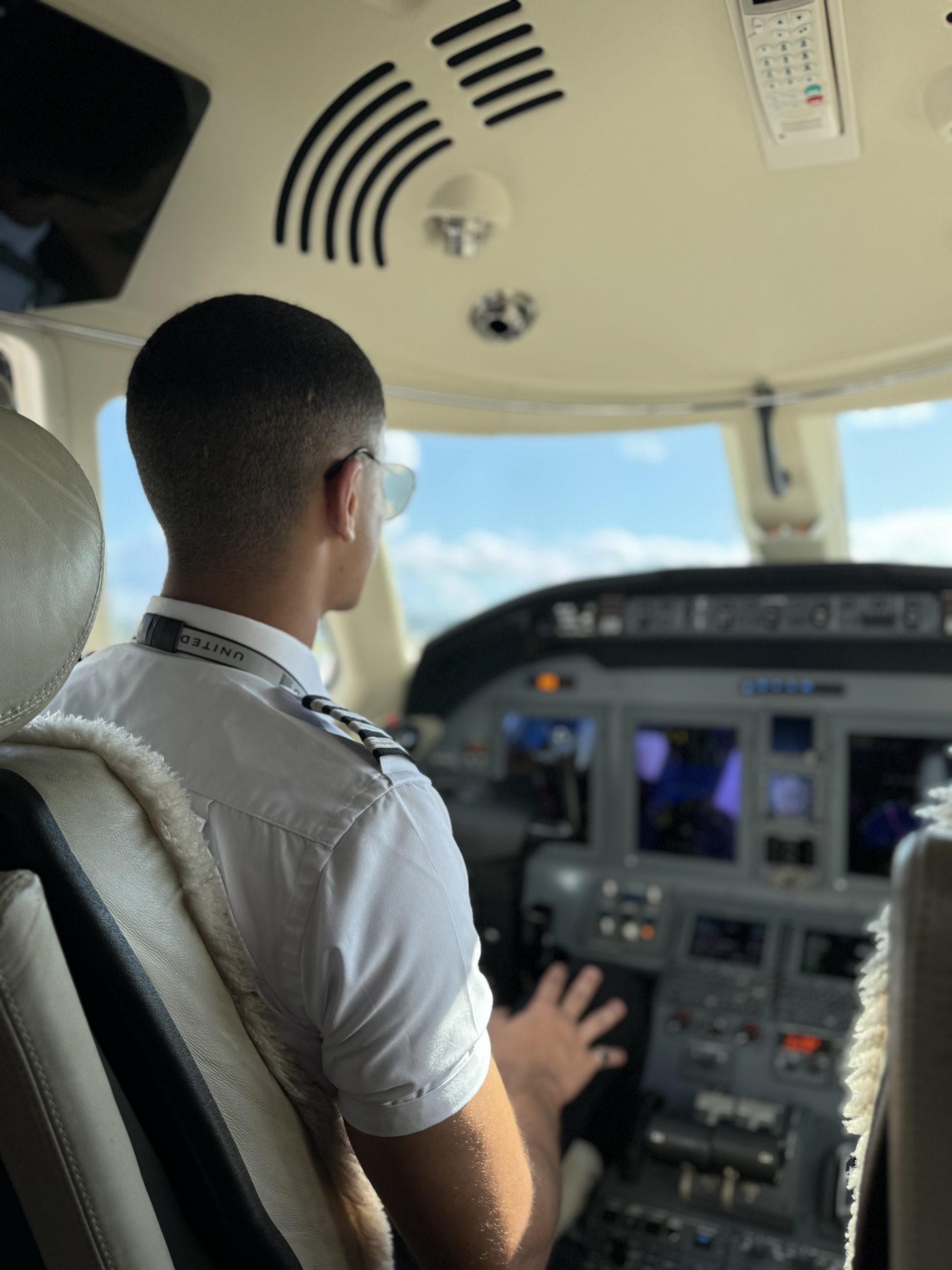How Do Pilots Navigate?
Knowing how to navigate is an essential part of flying. A pilot can understand the logistics behind flying a plane, such as when to check the airspeed indicator or how to land, but if they do not know how to get from Point A to Point B, they cannot successfully fly.
Pilots need to be able to understand where they are, where they need to be, and how to get there in order to stay on course. There are several methods of navigation that pilots use beyond the more conventional “looking out of the window,” and an understanding of them streamlines the process of flying, making it easier for pilots to reach their destination.
Pilotage
Pilotage refers to the process of looking outside of an aircraft and using visual cues. This often includes landmarks such as mountains, rivers, cities, and towers. Depending on the proximity to illuminated towers, pilots may even be able to fly using pilotage when it is dark. It is the most fundamental form of navigation in aviation, serving as the foundation for mastering other navigation techniques. Its simplicity and ease of use makes it particularly accessible for new student pilots, offering a straightforward introduction to the world of aviation navigation.
One downside to this method is that it requires unobstructed vision and cannot be used if there is a violation of the Visual Flight Rules (VFR). This includes inclement weather and objects that block windows. However, there are other options for navigation available to pilots that can bypass the weaknesses associated with pilotage.
Dead Reckoning
According to the Aircraft Owners and Pilots Association (AOPA), dead reckoning is “navigation solely by means of computations based on time, airspeed, distance, and direction.” Pilotage is a crucial part of dead reckoning, since pilots need to have a strong understanding of landscapes and checkpoints to use dead reckoning. Once pilots have a better understanding of landmarks, they can begin to get a sense for the amount of time it will take to get between various points on their flight path and start to learn how to navigate without relying on them.
Pilots perform computations using a variety of tools and navigation instruments within the flight deck, such as GPS devices, airspeed indicators, aeronautical charts, and compasses. This is often relative to a previous position, also known as a “fix.” Pilots use their distance from the fix as well as their current speed, which are obtained through tools in the flight deck, to estimate how much time it will take them to get to their next point or destination. Variable factors such as wind may be added to provide a more accurate reading.
In order to pass an FAA Practical Exam, pilots will need to know how to use dead reckoning and pilotage. Exams are taken on a specific course with its own unique landmarks, and pilots must be able to identify references while staying on a flight path to meet their requirements.
![N/A. Satellite Navigation - Global Positioning System (GPS). [photograph]. Federal Aviation Administration. https://www.faa.gov/sites/faa.gov/files/about/office_org/headquarters_offices/ato/GPSIII_satellite.png](https://media.pea.com/wp-content/uploads/2024/10/Alt-textN_A.-Satellite-Navigation-Global-Positioning-System-GPS.-photograph.-Federal-Aviation-Administration-300x162.png) GPS
GPS
The Global Positioning System (GPS) is an interconnected network of satellites that transmit radio signals to ground stations used to measure an object’s position, including its altitude, longitude, and latitude. It is one of the most reliable and commonly used forms of navigation for all individuals, regardless of whether they are pilots.
It is important to understand the terms altitude, longitude, and latitude, which determines an object’s coordinates. Altitude is the position of an object above or below sea level, while longitude and latitude measure the horizontal and vertical distance between an object and the equator respectively. The intersection of these three points generates a “coordinate” which is the exact position of an object relative to the equator.
Once the GPS has determined the position of an object, the system can calculate the physical distance between two objects as well as the time it will take to travel from one point to another.
The GPS is government operated and is usually regarded as the “universal” form of navigation due to its connections around the world. Since pilots operate on an international basis, the GPS is generally accepted as the main means of navigation in aviation. Most planes typically have some type of GPS instrument.
The Federal Aviation Administration (FAA) states that there are currently “31 GPS satellites [that] orbit the Earth at an altitude of approximately 11,000 miles providing users with accurate information on position, velocity, and time anywhere in the world and in all weather conditions.” This shows that the GPS has established a significant presence as an aid for global transportation.
![Staff, F. 2024. What is VOR in Aviation, and How Does it Work?. [photograph]. Flying Magazine. https://www.flyingmag.com/guides/what-is-vor-and-how-does-it-work/](https://media.pea.com/wp-content/uploads/2024/10/Staff-F.-2024.-What-is-VOR-in-Aviation-and-How-Does-it-Work_.-photograph.-Flying-Magazine.-https-__www.flyingmag.com_guides_what-is-vor-and-how-does-it-work_--300x200.webp) VORs
VORs
Very high frequency (VHF) omnidirectional range (VOR) is another type of navigation tool in the same vein as the GPS. Since the VHF predates the GPS, pilots use it less frequently. The number of VOR stations have been decreasing over the last few decades due to decommissions attributed to the FAA’s preference for GPS technology. However, VORs are still a valuable aid for navigation and serve as a backup for when the GPS goes down.
VOR technology uses the length of time, or phase difference, between a reference signal and a directional signal emitted by an antenna to determine what is known as the “VOR radial.” The VOR radial represents an aircraft’s position relative to the antenna of a ground control station. Once the VOR radial is determined, ground control sends the information to the aircraft where the pilot will then read it from an instrument. The pilot can now use this information to navigate accordingly, oftentimes to make sure that they are still on course.
While VOR technology has its limitations – such as requiring pilots to reference ground stations and typically being effective only within a 200-mile range – it has remained a reliable and well-established aviation navigation system for many decades. In contrast, GPS technology offers the advantage of global coverage. However, understanding VOR is essential for pilots, as it provides a solid foundation in navigation principles and ensures proficiency in various navigation methods.
Radio Communications with Air Traffic Control (ATC)
Communicating with Air Traffic Control (ATC) is another important aspect of navigation. Air Traffic Control constantly provides pilots with essential information, such as when to land, when to take off, updates on the weather conditions, and the presence of other aircraft, otherwise known as “air traffic. Pilots will use a specific ATC radio frequency to keep in contact with controllers.
The process of communicating with ATC can be challenging for beginners, as it involves the knowledge of codes and key phrases. Phoenix East Aviation teaches their pilots the importance of ATC communication, and how to communicate with the tower during ground school. Students then apply what they learn, in the flight deck, and will practice their communication skills as they continue to fly.
The Aeronautical Aviation Manual (AIM) contains detailed information on the rules for communications between pilots and controllers, including common radio phraseology and techniques such as when to say “over” to end a transmission and how to check that the radio frequency is operating correctly.
Communicating with ATC allows pilots to navigate safely to avoid oncoming traffic and inclement weather, and also provides them with any assistance they need to stay on course.
Once a pilot has strengthened their knowledge of the different forms of navigation, they’re now able to find the best way to get where they need to be.
Interested in learning more information in regards to Phoenix East Aviation and their flight training programs? Contact info2@pea.com to get in touch with their Admissions Department.
References:
https://www.faa.gov/air_traffic/publications/atpubs/aim_html/chap_4.html
https://www.faa.gov/about/office_org/headquarters_offices/ato/service_units/techops/navservices/gnss/gps
https://www.aopa.org/news-and-media/all-news/2016/march/flight-training-magazine/technique-pilotage-and-dead-reckoning
https://www.flyingmag.com/guides/what-is-vor-and-how-does-it-work/




